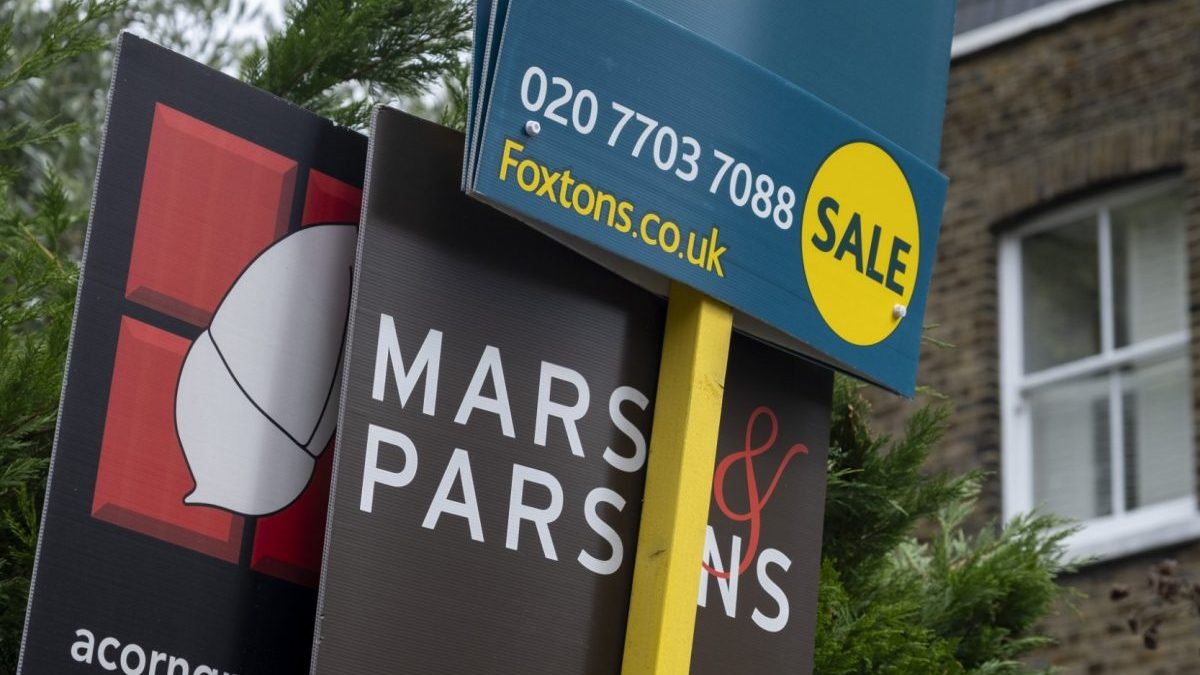The Bank of England will decide whether to cut interest rates from their current level of 4.25 per cent next week
Some major banks are cutting mortgage rates at the same time others are upping them in turbulent times for the market.
From Wednesday (11 June), Barclays will raise rates by 0.2 percentage points across its fixed rate products, while HSBC will make similar changes.
But NatWest is cutting some rates from Wednesday as well, with reductions of up to 0.23 percentage points.
The changes to rates come a week before the next Bank of England interest rate decision. The base rate currently stands at 4.25 per cent.
Mortgage rates generally go down when there are expectations that interest rates will be cut further.
This is because this sends swap rates – the rates at which banks lend to one another – down.
The Bank of England has cut interest rates twice already this year, and this has correlated with mortgage rates being reduced.
Although previously there had been an expectation that interest rates could get below 4 per cent in 2025, these are no longer as prevalent and some experts say there could be just one more cut.
In turn, this has stopped the speed of mortgage rate reductions from being as fast and has pushed some rates up.
Experts say that the general trend is that rates are going up, but that some lenders are having to use their “own strategy” to keep customers coming to them.
Aaron Strutt of Trinity Financial said: “There is a mixture of changes but there is no getting away from the fact most rates are going up. There are also fewer sub-4 per cent fixes.”
Nick Mendes of John Charcol brokers said: “Broadly speaking the bigger high-street names seem to be holding firm for now, clearly keen to stay competitive and keep volumes ticking over.
“Meanwhile, a few others have started tweaking their rates or tightening criteria just to balance the books especially those with less wiggle room on margins.
“It’s a classic case of every lender having its own strategy, really. The larger players can afford to ride it out and play the long game, while others are having to be a bit nimbler.
So what could happen to mortgage rates in the future?
Brokers aren’t sure, but expect they could stay steady or begin to fall.
“If swaps stay steady, I wouldn’t be surprised to see a few more competitive offers creeping in,” says Mr Mendes.
Elliott Culley of Switch Mortgage Finance added: “Some lenders may increase rates to reduce business levels for a short period of time whilst others decrease them to obtain more business. It likely won’t stay like this for long though.”
The Bank of England will decide whether to cut interest rates from their current level next Thursday 19 June.
Economists widely expect rates will be held at 4.25 per cent.
The day before this, on Wednesday 18 June, the Office for National Statistics will unveil the latest inflation data.
Economists generally think that the consumer prices index measure of inflation will fall marginally – to around 3.4 per cent – but a much bigger drop could lead to swap rates falling.
Conversely, a large rise could lead to swap rates rising, which could potentially push mortgage rates upwards.
Although there are cheaper rate best buys available, the average two-year fix is 5.13 per cent and the average five-year is 5.1 per cent, according to Moneyfacts.
